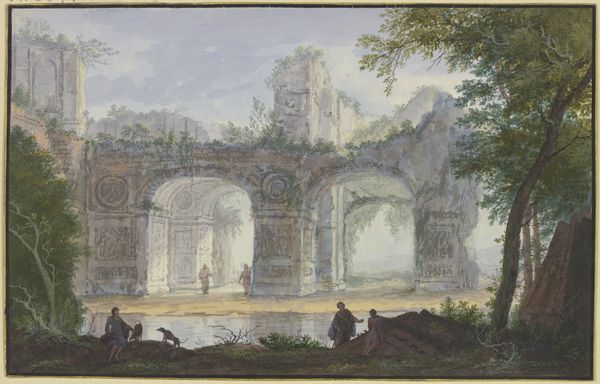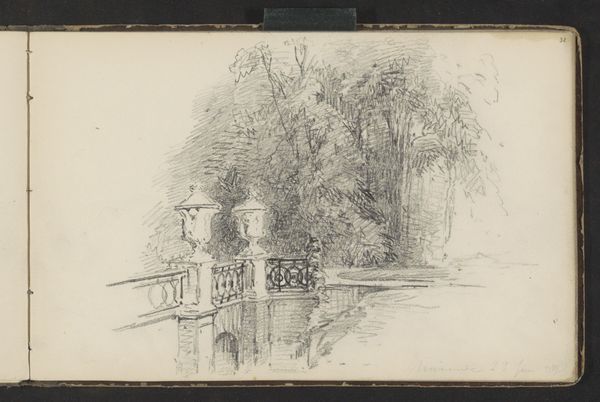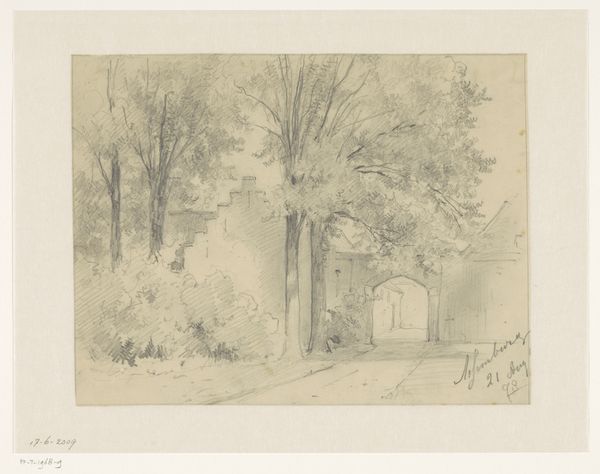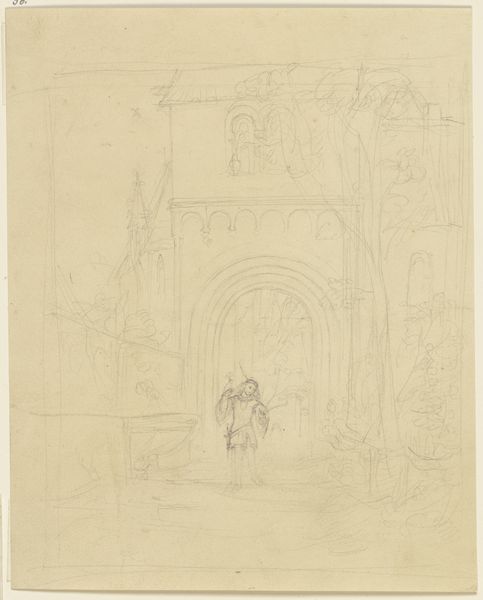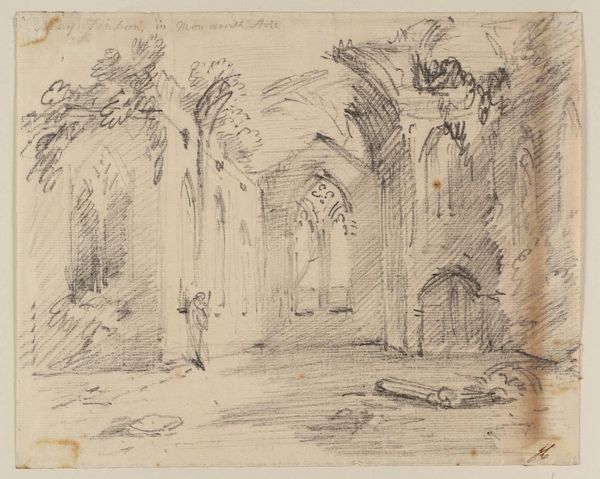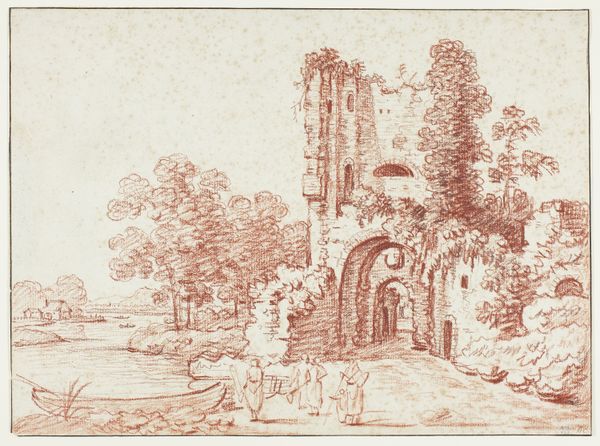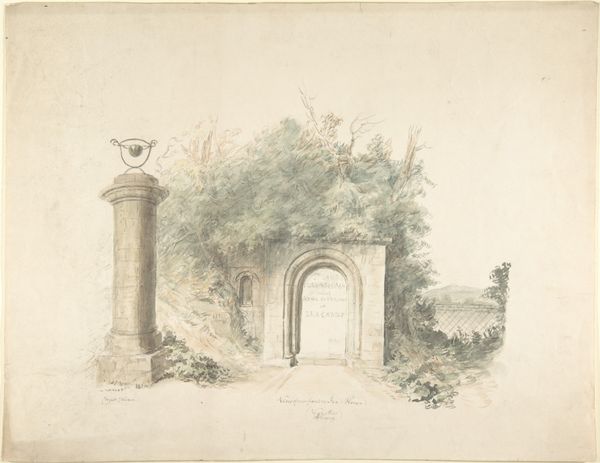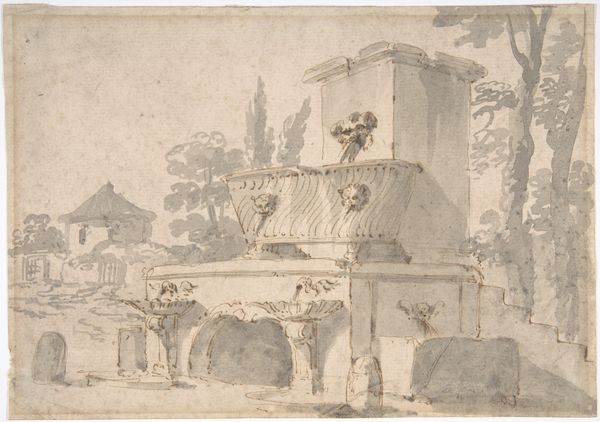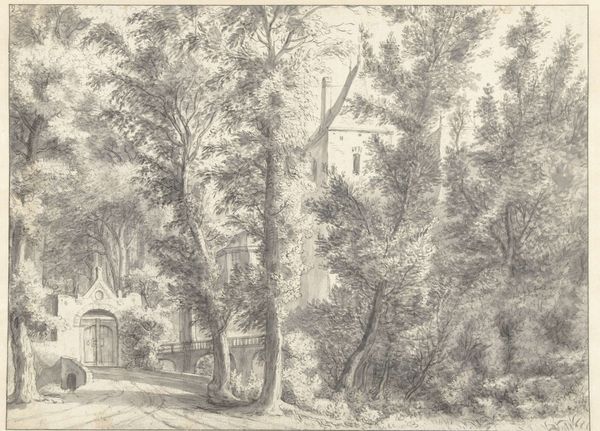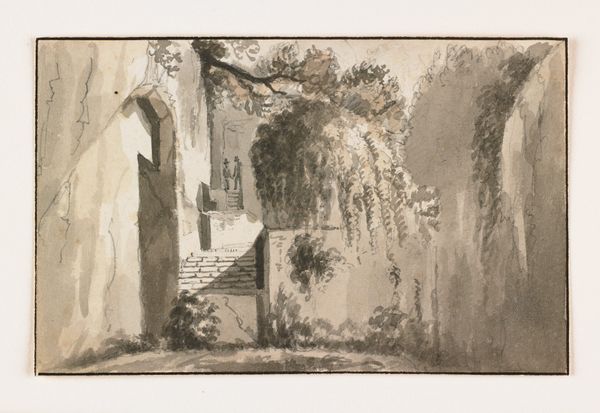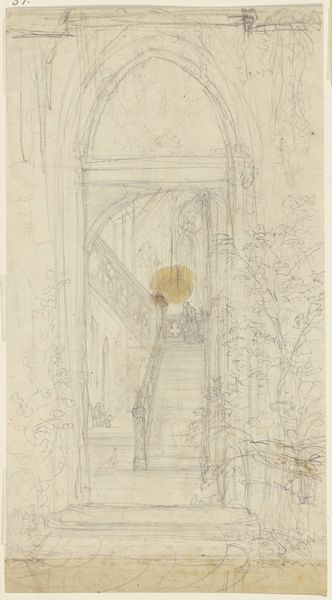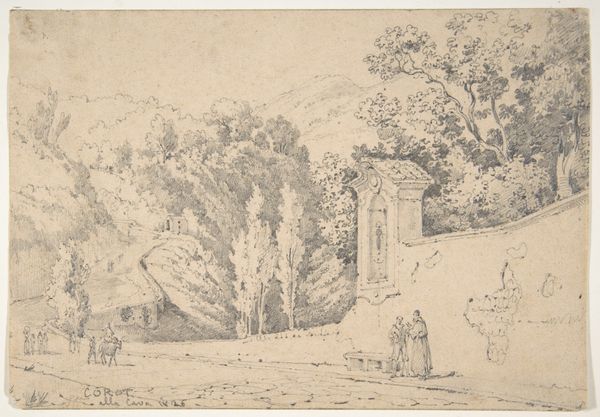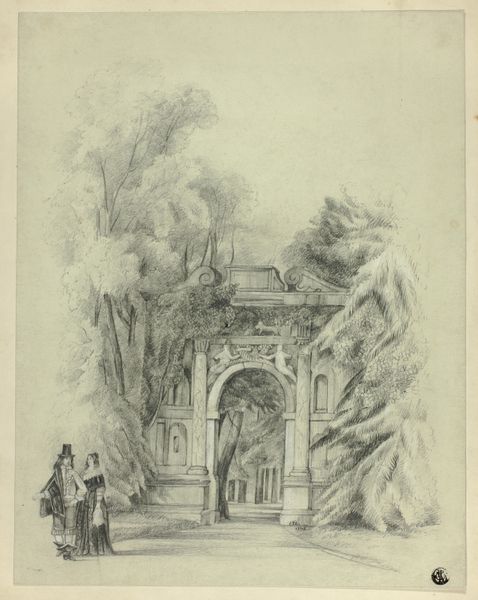
drawing, print, plein-air, paper, watercolor, ink, architecture
#
drawing
# print
#
plein-air
#
landscape
#
etching
#
paper
#
watercolor
#
ink
#
romanticism
#
architecture
Dimensions: 123 × 199 mm
Copyright: Public Domain
Curator: This drawing, "Solitude at Strawberry Hill," dates from around 1822 and is attributed to Thomas Rowlandson. Executed with ink and watercolor on paper, it captures a scene at Horace Walpole's famous Gothic Revival villa. Editor: The first word that comes to mind is "dreamy." The soft washes of watercolor create this hazy, almost ethereal atmosphere. It's peaceful but carries a melancholic air; the pale palette and skeletal trees contribute to a feeling of isolation. Curator: Strawberry Hill itself became a symbol. Walpole wanted to break from the prevailing classical tastes of his time. The Gothic represented a rejection of the rational and a return to a more emotional, imaginative past, heavily influenced by medieval forms. Editor: Exactly! And this representation is so crucial. The man seated, ostensibly seeking solitude, is placed precisely within the architectural and natural landscape designed to provoke particular feelings, creating the mood of Romanticism. One could argue his 'solitude' is deliberately staged by these backdrops. Curator: It's a powerful illustration of Romanticism's engagement with history and emotion. The delicate, almost tentative, linework emphasizes a kind of refined sensitivity—that fascination with melancholy and contemplation. Editor: I think, too, the depiction here reminds us that architecture itself isn’t neutral. Spaces impact our behavior, influence feelings, dictate access. Consider, too, who historically could afford such private contemplative grounds, and whose labor made them possible. Even the idealization of "solitude" can be loaded with social implications, with those in power retreating in their big homes. Curator: Yes, there is a dichotomy, a subtle dissonance here between Rowlandson's subject and setting and the way we now view issues around accessibility and inclusion in public spaces. And I'd note that it provides insights into the symbolic weight Walpole’s Strawberry Hill was already gathering, the start of a process that gave us the neo-gothic tropes in pop culture to this day. Editor: It's this complex relationship that makes this piece resonate, for me anyway. It’s not simply a picturesque landscape but an insight into power dynamics as staged during that moment in British history. A kind of tableau of class, taste, labor, architecture, and our enduring fascination with being, or appearing, alone.
Comments
No comments
Be the first to comment and join the conversation on the ultimate creative platform.
